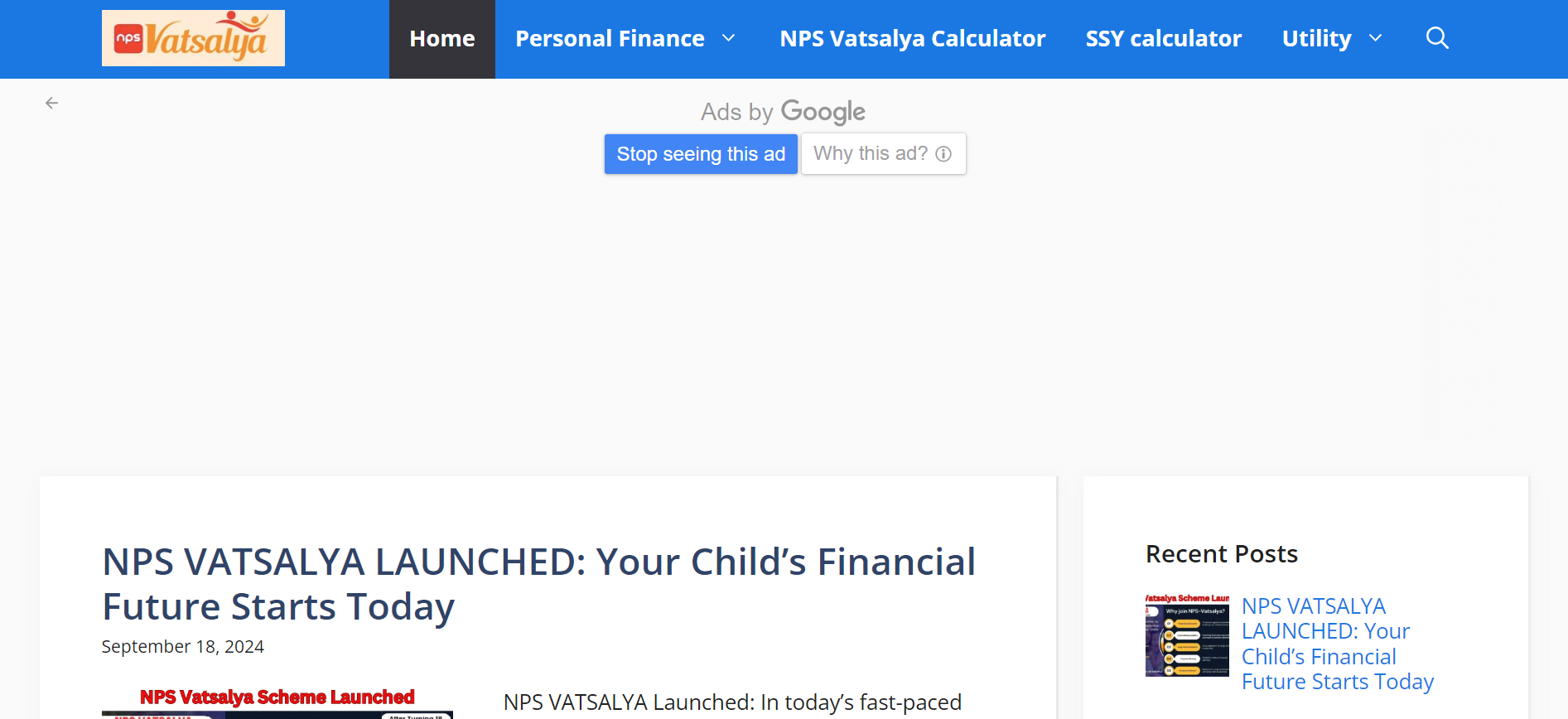
NPS Vatsalya Scheme: How To Apply Online, Eligibility, Investment Amount, And More
The Union Finance Minister, Nirmala Sitharaman, has recently launched the NPS Vatsalya scheme. The government has introduced an online platform to make it easier for users to apply for the NPS Vatsalya scheme. This scheme is a long-term investment opportunity for young individuals, allowing their parents and legal guardians to save for their minor children. We've put together a comprehensive guide with details on eligibility criteria, investment options, and how to apply for the NPS Vatsalya scheme. Keep reading to find out more.
All About The NPS Vatsalya Scheme
The NPS Vatsalya scheme will be supervised and managed by the Pension Fund Regulatory and Development Authority (PFRDA). All Indian citizens and even NRIs, can apply for the NPS Vatsalya scheme to secure a financial safety net for their minor children. In circumstances where the parent is absent, any legal guardian of the minor can also open an NPS Vatsalya account.

It is imperative that the NPS Vatsalya account is opened under the minor’s name, after which a Permanent Retirement Account Number (PRAN) card will be issued. This is a great initiative launched by the government under the Union Budget of 2024-2025, which gives parents an option to start investing in their children’s future from a young age.
This is the official website of the NPS Vatsalya scheme: https://npsvatsalya.com/
NPS Vatsalya Scheme: Eligibility Criteria And Investment Options
NPS Vatsalya Eligibility Criteria
The following are the eligibility criteria for the NPS Vatsalya scheme:
- All minor individuals under the age of 18 who possess a valid PAN card can apply for the scheme.
- Legal guardians and parents should make a minimum annual contribution of Rs 1000.
- Parents and legal guardians can make these contributions on behalf of the young subscribers.

NPS Vatsalya Scheme Investment Options
The following are the available investment options for the NPS Vatsalya scheme as per Business Today:
- Default Choice: Moderate Life Cycle Fund - LC-50 (50% equity).
- Auto Choice: Guardian can choose Lifecycle Fund from Aggressive LC-75 (75% equity), Moderate LC-50 (50% equity), or Conservative LC-25 (25% equity).
- Active Choice: Guardian actively decides the allocation of funds across equity (up to 75%), corporate debt (up to 100%), government securities (up to 100%), and alternate assets (up to 5%).
NPS Vatsalya Scheme: How To Apply Online
Here are the documents you need to apply for the NPS Vatsalya scheme:
- KYC Of The Guardian
- Proof Of Identity
- Proof Of Address
- Proof Of Date Of Birth Of The Minor
NOTE: NRE/NRO Bank Account (solo or joint) of the minor if the guardian is an NRI is required.

Here is a detailed step-by-step guide on how to apply for the NPS Vatsalya scheme:
- Step 1: Go to a designated Point of Presence such as a bank (e.g., ICICI or Axis Bank) or visit the e-NPS online platform at https://npsvatsalya.com/.
- Step 2: Bring essential documents like the child’s birth certificate, PAN card, and Aadhaar card to verify identity and age.
- Step 3: Now, complete the NPS Vatsalya account application form at the POP or on the e-NPS platform.
- Step 4: Select any PFRDA-registered pension fund that suits your investment preferences.
- Step 5: Pick a suitable investment option offered under the NPS Vatsalya scheme based on your financial goals.
- Step 6: Hand over the completed form and documents at the POP branch or submit them online via the e-NPS platform.
- Step 7: After the application is processed, you will receive a Permanent Retirement Account Number (PRAN) card for the child's NPS Vatsalya account.
Once the minor turns 18, a new KYC process will be required to transition the account into a standard NPS Tier-I account.
Don't Miss: Ration Card With Aadhaar Card: Step-By-Step Guide
NPS Vatsalya Scheme: Withdrawal
After a lock-in period of three years, contributors can withdraw up to 25% of their total contributions for specific purposes such as education, certain illnesses, and disability. This withdrawal is allowed up to a maximum of three times during the duration of the plan.
When the individual reaches the age of 18, if the accumulated corpus exceeds ₹2.5 lakh, these are the withdrawal conditions:
- 80% of the corpus must be used to purchase an annuity (a financial product that provides regular payments).
- 20% of the corpus can be withdrawn as a lump sum.
Don't Miss: EPFO Removes Aadhaar Card As Date Of Birth Proof; Check Valid Documents
Image Credits: Freepik & https://npsvatsalya.com/
If you liked this story, then please share it. To read more such stories, stay connected to HerZindagi.
Also watch this video
Herzindagi video